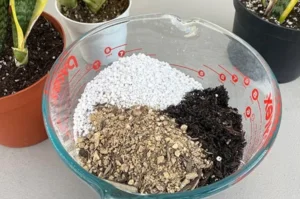Snake plants (Sansevieria) are hardy and attractive houseplants that require minimal care. However, occasional trimming is essential for maintaining their health and appearance. Understanding the best time to prune your snake plant ensures it continues to thrive. This guide covers when and how to trim, common mistakes to avoid, and essential aftercare tips.
Why Should You Trim Your Snake Plant?
Regular pruning offers several benefits, including:
- Encouraging New Growth: Removing damaged or dead leaves allows the plant to focus on producing fresh foliage.
- Preventing Overcrowding: Helps the plant maintain an ideal structure and avoids excessive bushiness.
- Enhancing Aesthetic Appeal: A well-trimmed plant looks neat and attractive.
- Removing Diseased or Yellow Leaves: Prevents the spread of infections and keeps the plant in top condition.
When Is the Best Time to Trim a Snake Plant?
The ideal time to trim your snake plant is during its active growth season, which falls in spring and summer. During this period, the plant recovers faster and continues to grow healthily.
Should You Trim a Snake Plant in Winter?
It’s best to avoid trimming your snake plant in fall or winter, as the plant enters a dormant phase. Pruning during dormancy may slow down recovery and hinder new growth.
Step-by-Step Guide to Trimming a Snake Plant
Follow these steps to ensure proper pruning:
1. Gather Your Tools
- Clean, sharp pruning shears or scissors
- Gloves (optional for protection)
- A cloth to wipe down tools before and after use
2. Identify Leaves for Removal
Look for leaves that are yellow, brown, damaged, or excessively long and remove them to maintain the plant’s symmetry.
3. Trim at the Base
Use sharp, sanitized shears to cut unwanted leaves at soil level. This helps maintain a natural shape.
4. Allow Healing
Avoid watering immediately after trimming. Let the cut areas dry for a day or two to reduce the risk of rot.
5. Dispose or Propagate
Discard unhealthy leaves, but if the cuttings are healthy, they can be propagated in water or soil to grow new plants.
Mistakes to Avoid When Trimming a Snake Plant
- Over-pruning: Removing too many leaves at once can weaken the plant.
- Using Dull or Dirty Tools: Can cause uneven cuts and introduce bacteria.
- Trimming During Dormancy: The plant struggles to recover in colder months.
- Watering Immediately After Pruning: Excess moisture can lead to root rot.
Post-Trimming Care Tips
- Provide Indirect Sunlight: Helps the plant recover and promotes new leaf development.
- Water Lightly: Prevents overwatering issues and encourages healthy regrowth.
- Use Well-Draining Soil: Ensures balanced moisture levels.
- Apply a Light Fertilizer in Spring: Supports fresh growth and strengthens the plant.
Frequently Asked Questions (FAQs)
How Often Should a Snake Plant Be Trimmed?
Trimming is typically needed once or twice a year, depending on the snake plant’s growth rate.
Can I Trim Just the Tips of My Snake Plant?
Yes, you can trim brown or damaged tips, making sure to cut at an angle for a natural look.
What Happens If I Never Trim My Snake Plant?
Without pruning, the plant may become overgrown, develop damaged leaves, and have reduced air circulation, increasing the risk of disease.
Can I Propagate Snake Plant Cuttings?
Yes! Healthy cuttings can be placed in water or soil to grow new plants.
Conclusion
Trimming your snake plant at the right time is essential for its overall health and longevity. The best time for pruning is in spring and summer, while winter trimming should be avoided. Using proper techniques and post-trim care ensures a thriving and visually appealing plant. By following these steps, your snake plant will stay vibrant and well-maintained throughout the year.






